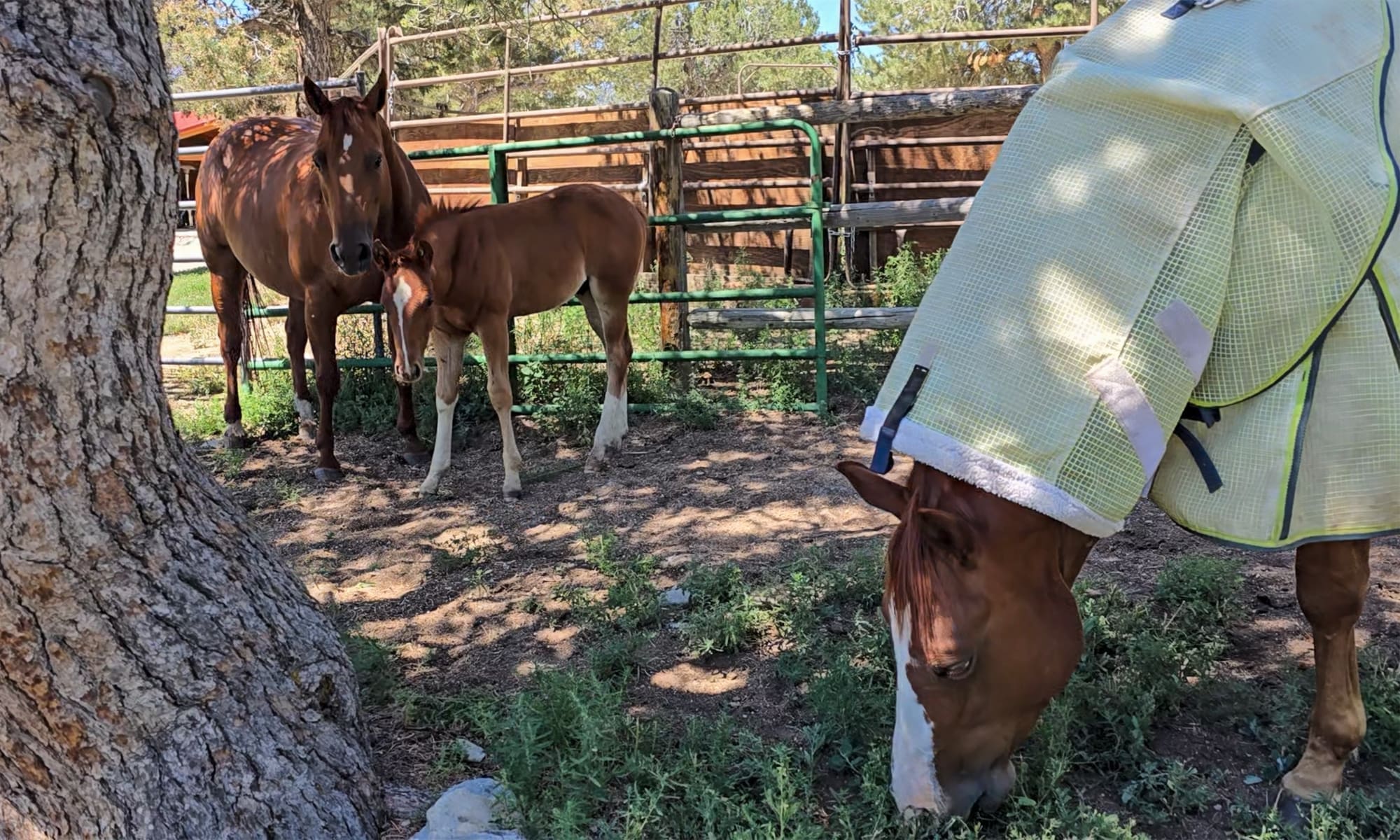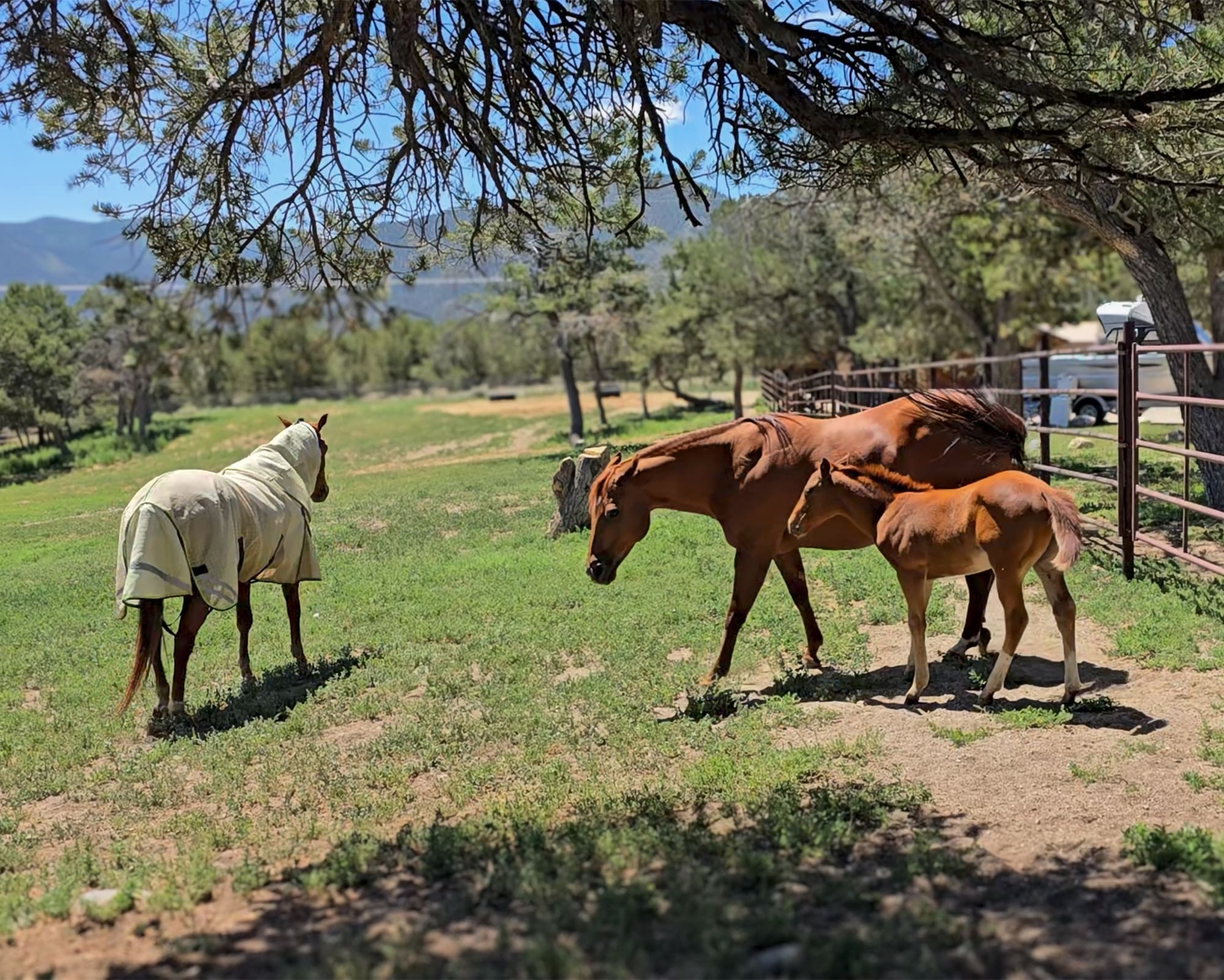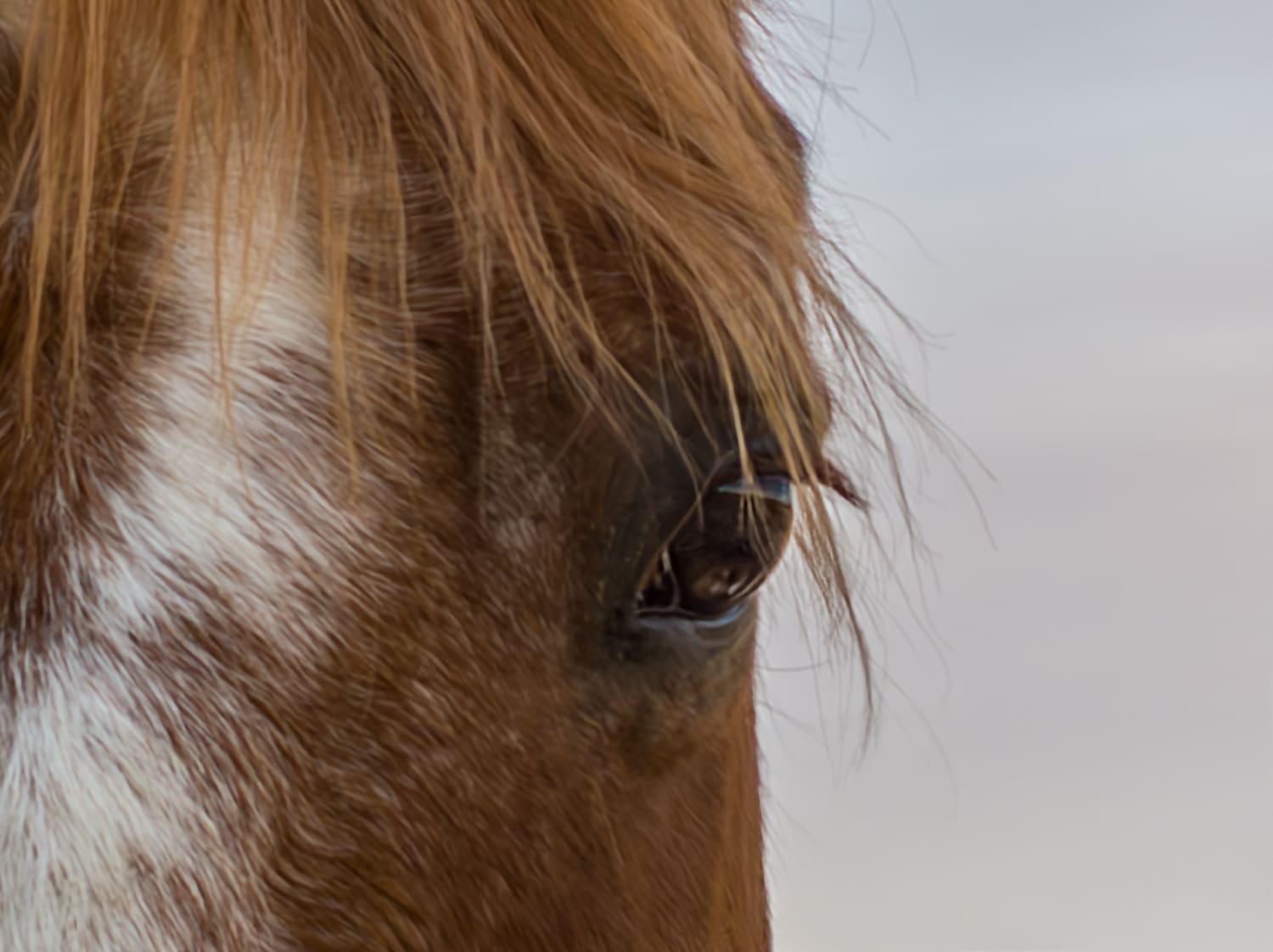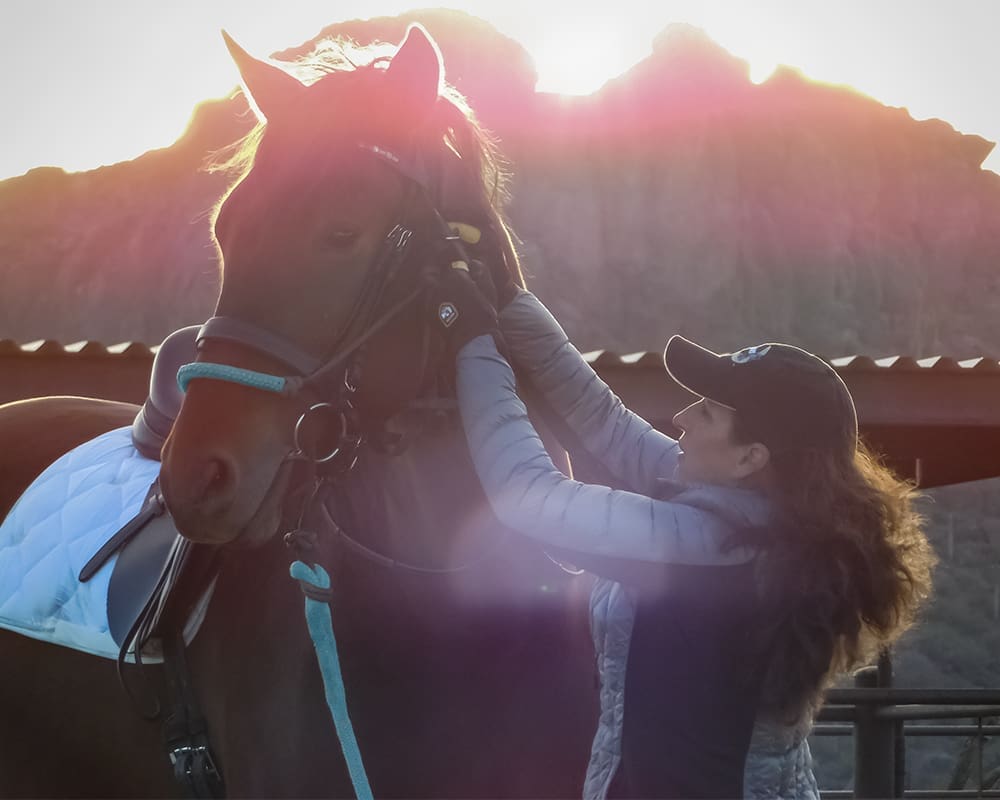Before we can ever hope to understand, let alone control the movement of a horse, it is important to know the various behaviors that motivate a horse to move in the first place. Being a prey animal means the horse’s first reaction to danger is to run, hell bent for leather, away from the perceived threat. React first, think later.
Everyone knows that horses are flight animals; in fact, horses are the very definition of flighty and depend on this behavior for survival. What is often misunderstood about horses is, how deep the flight response goes in a horse’s nature and that every movement a horse is capable of and every step he takes has some significance.
Everything about the horse is linked to its flight response. Crazy as it sounds, even their laziness is related to the flight response. By nature horses are generally lazy, for the sole purpose of preserving energy in case it is needed in flight. In the current trend of natural horsemanship, far too much is sometimes made of the predator-prey relationship, since horses, after all, have been domesticated for thousands of years and don’t really think of humans as carnivorous predators. However, it is important to understand that the prey instinct is the origin of the horse’s behavior as we know it today and it is what motivates their movement.
Horses are herd animals, again related to prey-dom, meaning their survival is dependent on the herd. Safety in numbers. Herd behavior is another important motivating factor for a horse and is present in our everyday dealings with horses, more so than is often recognized. Again, every movement a horse makes has meaning and when given a choice, the horse will always move toward the protection of the herd. These are fundamental and deep layers of horse behavior and the subject could fill many volumes, but the one thing we can deal with here, is to develop an understanding of how we can control the movements of a horse in our presence.
The first thing to understand is that the horse feels safer when he is moving his feet, and the more nervous or uncertain he gets, the more he wants to move his feet. Yet there is nothing a horse likes better than to feel protected enough that he can snooze, standing or prone, knowing that the herd leader is watching out for his safety. The herd leader, a/k/a boss mare, is responsible for the safety of the herd and with a second’s notice, must be able to motivate the entire herd to flight. She earns the respect, admiration, obedience and, most importantly, attentiveness of the herd by dominating every move they make and by controlling the resources of the herd (you’ll recognize the boss mare easily, she’s the one standing in front of the water trough, playing in the fresh clean water and slowly sipping until she is satiated, while the rest of the herd stands in line, thirsty but patient, awaiting their turn in the pecking order). Although the boss mare enjoys many perks, like first access to food and water, the best shade and the best rolling spot; along with these perks comes the awesome responsibilities of protecting the herd and keeping order.
The boss mare controls the actions of each herd member through her body language. When her head is down in the grass and she is quietly munching, her herd mates will be relaxed. When her head comes up, ears prick forward and her muscles tighten, the rest of the herd knows to prepare for flight. They will follow her anywhere on her signal. Just to make sure the horses all pay attention to her in times of stress, the boss mare will periodically push the herd individuals around a little so that they are in the habit of responding to her. When she directs her gaze at an individual, flattens her ears and takes a step toward him, the subordinate horse knows to immediately move away. If they don’t respond quickly enough, she might leave some teeth marks on his rear end. Subordinate herd mates will quickly learn to watch the body language of their leader at all times and to respond without question to her movements. Wouldn’t it be nice to have the kind of relationship with your horse that they respond to your requests without question?
If you have the opportunity to observe a herd, you will learn to recognize the subtle communications that constantly occur. For instance, a frightened horse will elevate his head, tense his ears, stiffen his tail and hold his breath; all of these actions communicate an outside threat to the other horses and they will instantly act the same way and look in the same direction. A relaxed and safe horse will lower his head (the lower it goes the more relaxed he is), relax his ears, lick his lips, chew, drop his tail and take a deep sigh. Horses communicate with their body language, with the head position, ear position, facial expressions, feet, tail, mouth and nose. Horses receive communication from us in the same way, whether we know it or not.
The desired relationship between horse and human is that of a herd of two. According to the laws of the herd (the only rules horses really understand) the hierarchy is linear, meaning each and every individual of the herd is either dominate over or subordinate to each and every other individual. In your herd of two, your choice is clear: you must be the dominant member, the alpha individual, the “boss mare.” You must earn this respect, admiration and obedience by controlling the space of your horse and the “resources” of your herd (if your horse is frisking you for treats, HE is controlling the resources).
The first step in controlling your horse’s movement is to control your own body language. Your horse will notice your posture, eye contact, your foot movements, the elevation of your shoulders, the tone of your voice and the rhythm of your breathing. Be aware of the actions on your part and know that you are constantly communicating with your horse through your body language. If your horse takes a step toward you and you back away, you have just told him he is in charge. If you get scared, tense your muscles and hold your breath, your horse will mirror your actions and instantly become frightened.
All horses, no matter how high in the hierarchy, will gratefully accept the leadership of another individual, as long as the leader has demonstrated their commitment to controlling and protecting the herd. For a horse to accept a human as leader, that human must be able to control the horse’s space and must never betray his trust by causing him fear or pain. Once they have accepted the individual (horse or human) as leader, they will be relaxed, compliant, obedient and happy.
In natural horsemanship, we use ground work (round pen and lead-line) to control the horse’s space so that he becomes subordinate. Beyond just controlling his space, we learn to communicate with the horse through our body language, to develop a strong bond and trust between leader and follower. The horse must be treated firmly but with kindness and above all, your interactions with the horse must be consistent so that he can learn to trust them. This kind of relationship with the horse is the ideal, but one that many horsemen find illusive.
To have a horse that is happy, respectful and obedient, who willingly does whatever you ask and responds to your most subtle cues, you must first become his leader and earn his respect. Learn to control your horse’s space and communicate with your own body language in a way that he understands, and you will not only earn his respect, but admiration as well.
Get Julie’s Training Videos HERE
Copyright ©Julie Goodnight 2000. All Rights Reserved. No part of this website may be reproduced without owner’s express consent.



